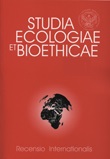The impact of experimental forest fire on collembolan communities
The impact of experimental forest fire on collembolan communities
Author(s): Izabela Olejniczak, Stefan Russel, Anna PrędeckaSubject(s): Geography, Regional studies, Environmental Geography
Published by: Wydawnictwo Naukowe Uniwersytetu Kardynała Stefana Wyszyńskiego w Warszawie
Keywords: Collembola; burnt plots; communities; forest
Summary/Abstract: Our study was carried out in fresh pine mixed forest, Biala Forest, near Warsaw (52°59’ N, 21°46’ E and 52°79’ N, 21°89’E, Eastern Poland). Three experimental plots, 1m2 size, were chosen at random and burnt in June. Material was collected: just after experimental fire (in June ), 30 , 60 and 90 days after fire (respectively: in July, August and September). On every sampling occasion 10 soil samples of an area of 10 cm2 and a depth of 5 cm were taken in each sampling plots: burnt plots, in border of burnt plots and in surroundings of burnt plots. We found that experimental fire influenced on collembolan densities (Kruskall-Wallis test, H=8.29, P=0.01). Just after experimental fire we fo¬und no collembolans in burnt plots. In a period of 90 days following the experimental fire densities of springtails of burnt and surroundings were similar. Euedaphic springtails were the dominating group in burnt plots and contrary to the border of burnt plots and surroundings, we noticed no epigeic springtails. Contribution of epigeic, hemiedaphic and euedaphic species in collembolan communities of investigated areas could point to different defence strategies of these invertebrates. Immature individuals of Collembola were the most numerous in burnt plots and at border of burnt plots and this phenomenon is probably crucial for reconstruction of collembolan communities after fire.
Journal: Studia Ecologiae et Bioethicae
- Issue Year: 12/2014
- Issue No: 4
- Page Range: 115-125
- Page Count: 11
- Language: English

